WorldTour teams speed up disc brake wheel changes with F1-inspired tools
Power drills become vital equipment to ensure rapid service
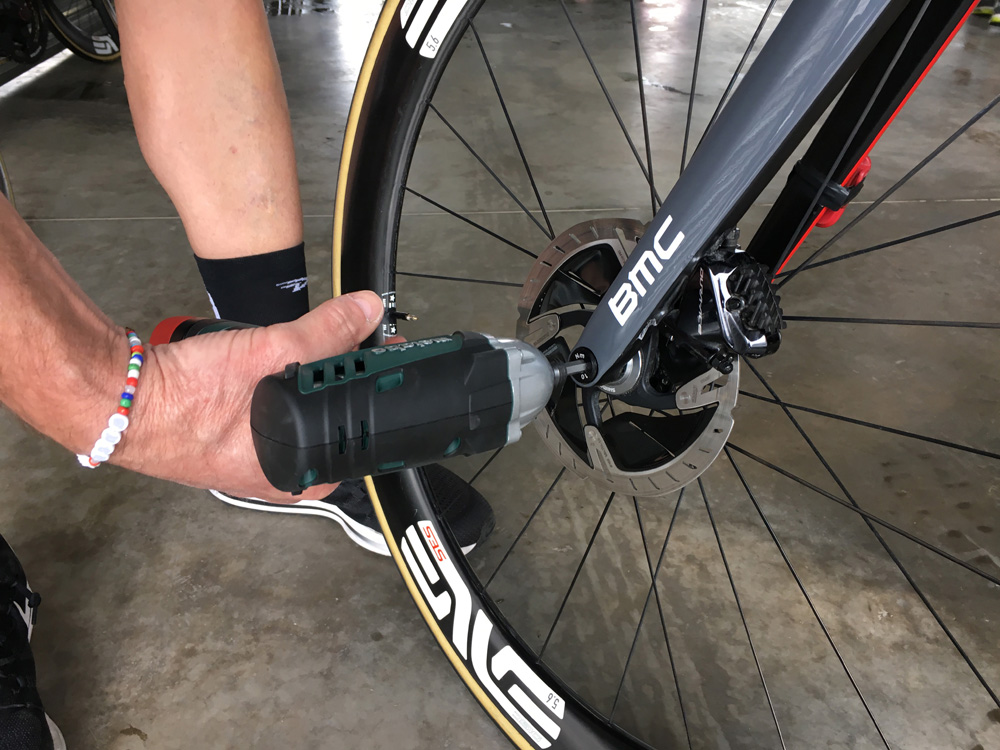
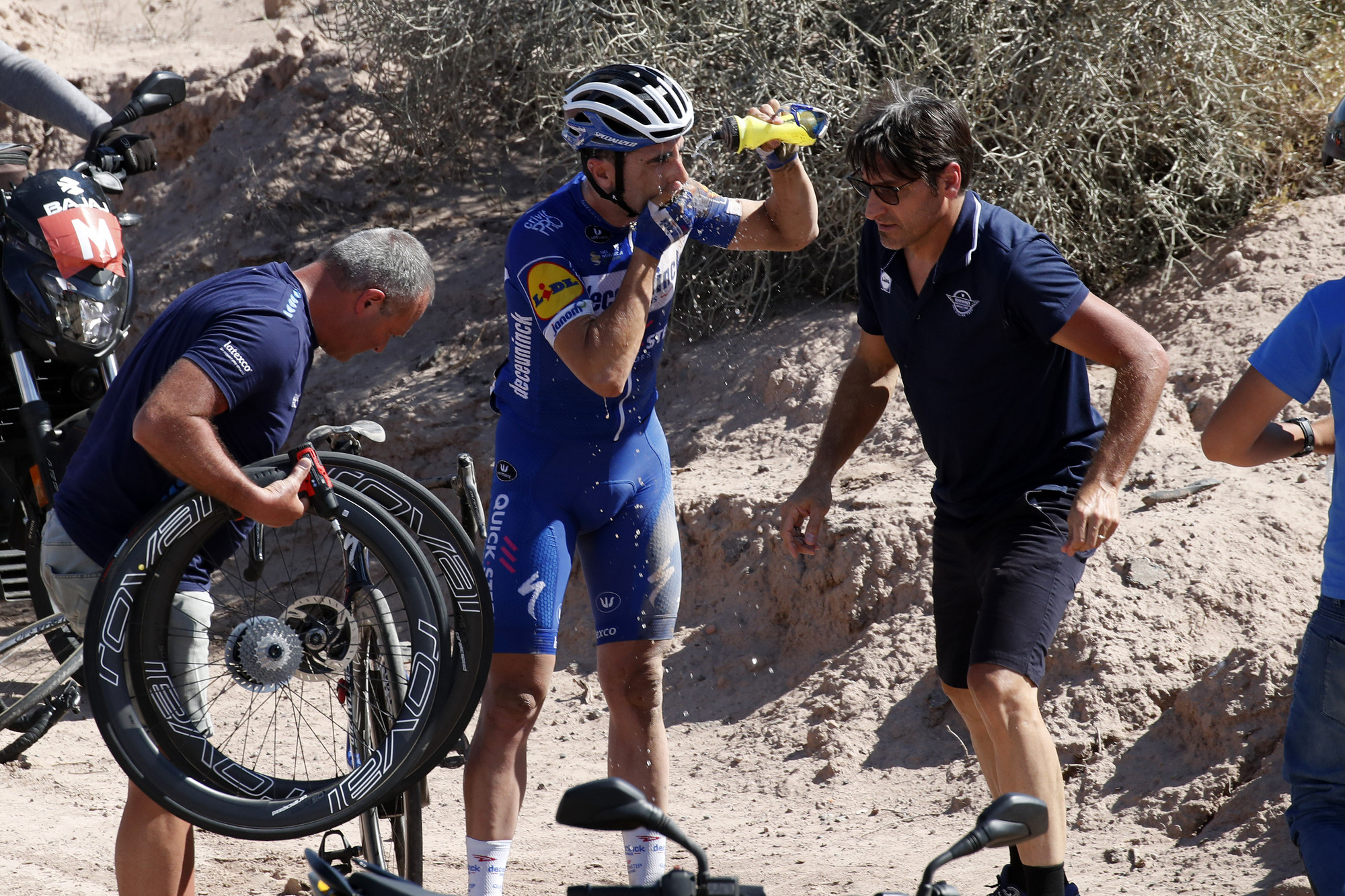

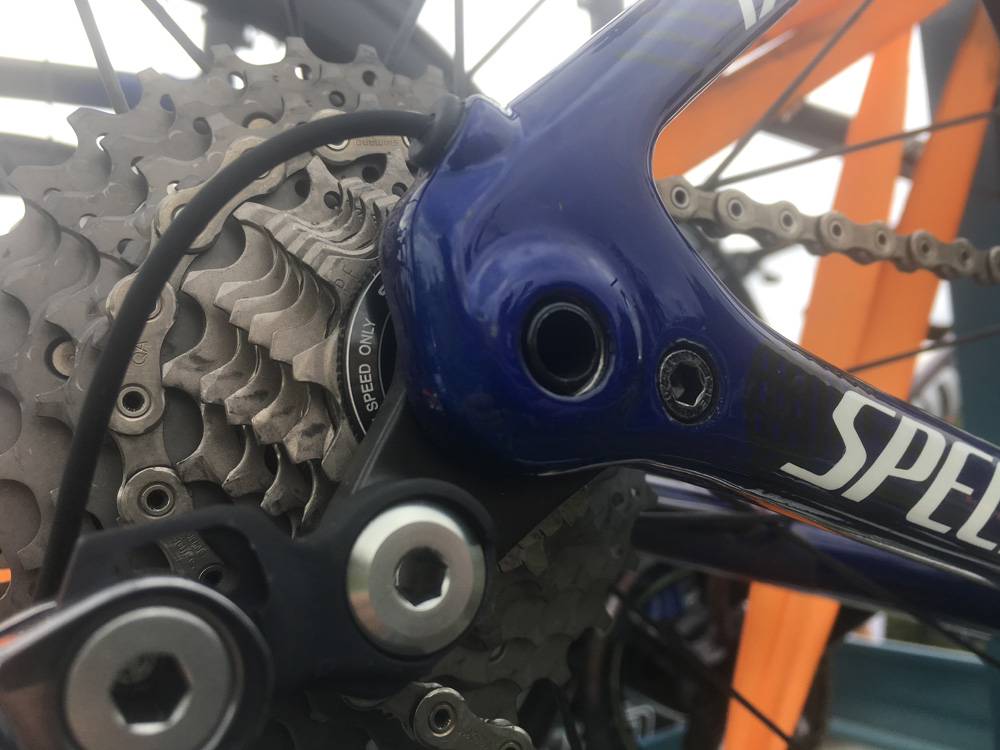
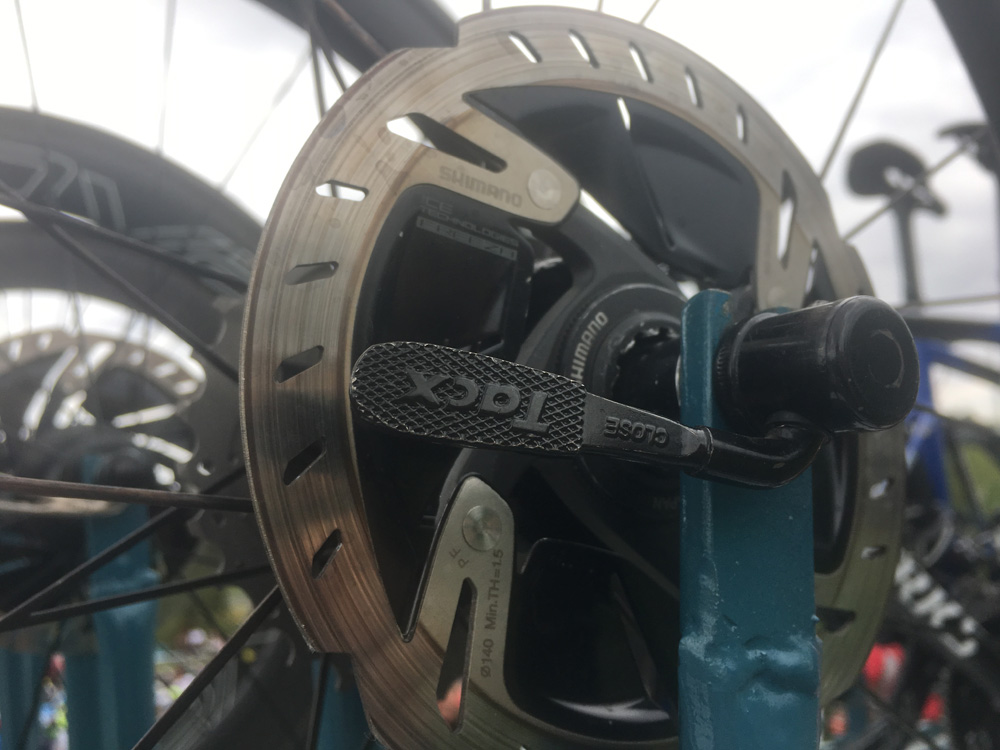
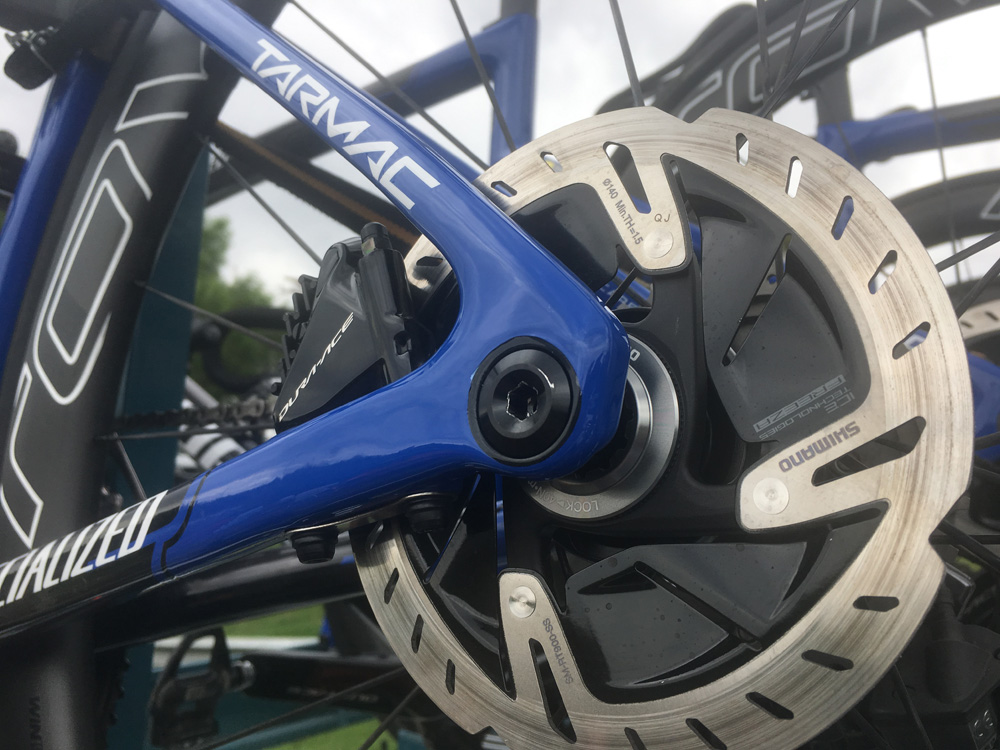
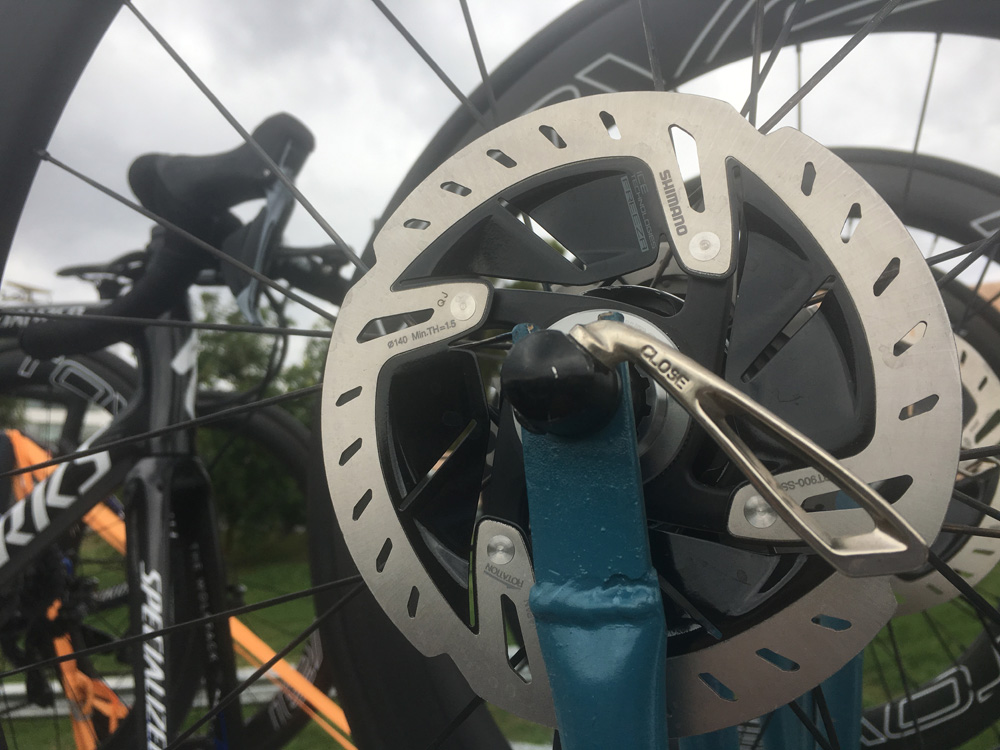
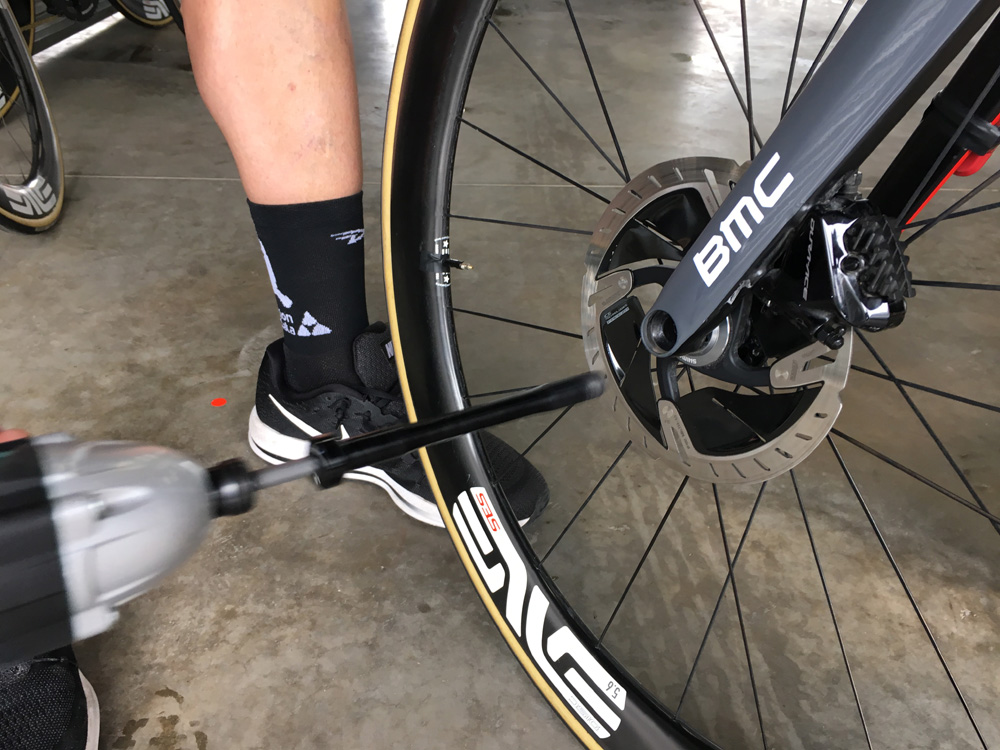
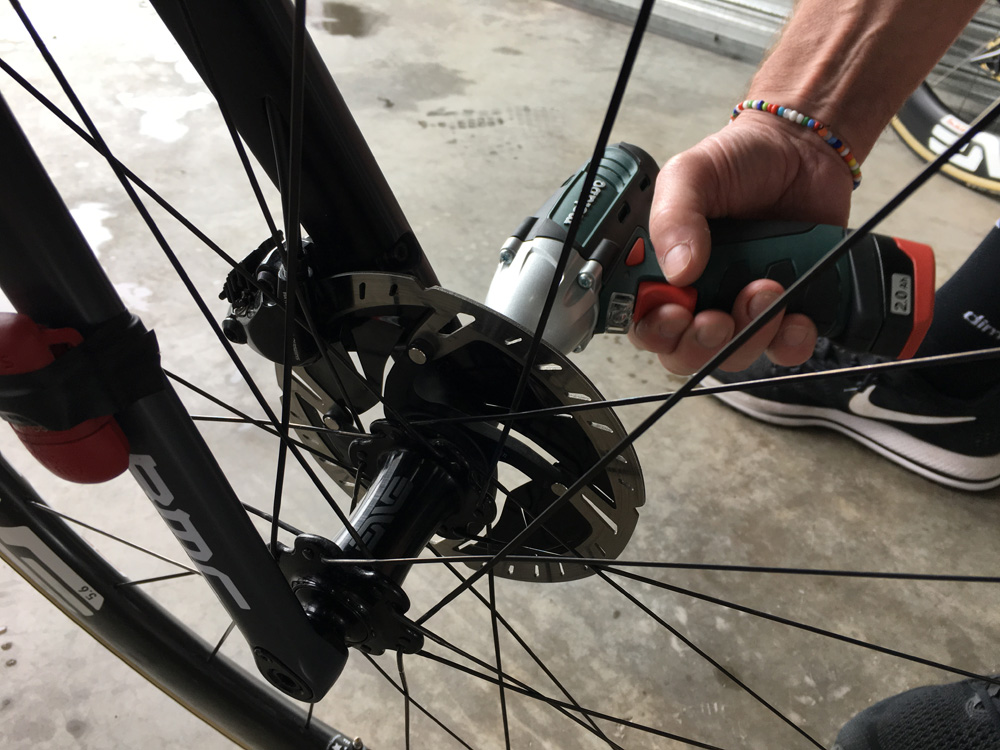
As the use of disc brakes becomes more prevalent in the professional peloton, teams and mechanics are taking ideas from Formula 1 to make quick wheel changes in races.
Cyclingnews recently spotted several teams using electric power tools to help change disc brake wheels as fast as possible. Formula 1 teams use bigger pneumatic air guns when changing wheels, while cycling uses smaller electric power tools. However, the concept and goal is the same: unscrewing and then screwing in the wheel as quickly as possible.
At the Vuelta a San Juan, Bora-Hansgrohe, Deceuninck-QuickStep, Dimension Data, Neri Sottoli, Sporting Tavira and Beltrami were all using disc brakes, and all three WorldTour teams had already sourced power tools to speed up wheel changes. Neri Sottoli told Cyclingnews they will also use power tools when they return to Europe after a manual rear disc-wheel change on stage 2 took almost 30 seconds.
Klas Johansson, head mechanic at Dimension Data, gave Cyclingnews a demonstration of how he uses a small Metabo Powermaxx power tool. It is set for a torque of 11nm and unscrews and tightens the thru-axle in a couple of seconds, much quicker than doing it by hand with a hex key.

A look at Johansson's Metabo drill
Johansson got to test his disc-wheel changing skills on the final stage of the Vuelta a San Juan. Mark Cavendish suffered a rear puncture 20km from the end of the stage, and Johansson was able to give him a rapid wheel change so he could quickly catch the peloton and contest the sprint. Riders often choose to change bikes as opposed to wheels when time is tight, but usually only the team leader’s bike can be taken off the rack quickly because it is located on the outside of the roof rack on team cars.
The bike belonging to Cavendish – a notorious perfectionist when it comes to bike setup – had the best position on the team car, but perhaps he wanted to stay on his first choice bike he had used for the entirety of the race, and so he opted for a wheel change.
Get The Leadout Newsletter
The latest race content, interviews, features, reviews and expert buying guides, direct to your inbox!
Johansson explained that a normal wheel change takes about the time seven team cars go past in the race convoy, while the rear disc-wheel change took about 14 cars. He suggested that with the power tool, a rear disc-wheel change takes 10 seconds longer than a rim-brake wheel fitted with a quick-release lever, and so about 20 seconds in total. The extra time is needed to carefully align the disc between the pads as well as the smallest sprocket with the chain.

A set of wheels and drill can easily be held in one hand
When Johansson hears over the radio that one of his riders has punctured, he now grabs his power tool as well as a set of wheels. He is happy to do so as long as it helps speed up wheel changes and keeps his riders happy and in the race.
The use of the thru-axles means the quick release skewer is no longer needed, making for cleaner looking and stiffer dropout areas, as well as the benefits of disc brakes. Teams now only use quick-release skewers to hold the disc wheels on the bike rack on the team car.

Stephen is one of the most experienced member of the Cyclingnews team, having reported on professional cycling since 1994. He has been Head of News at Cyclingnews since 2022, before which he held the position of European editor since 2012 and previously worked for Reuters, Shift Active Media, and CyclingWeekly, among other publications.